In 2025, new writing apps are coming out every day. You have apps for creative writing all the way to essay and content writing. And honestly, it’s getting difficult to find the best writing apps for specific needs.
Today, we’ll be exploring the different apps for writers. Apps that help with correctness and clarity to apps that help with sentence length to content creation. We’ll be searching through many unique options so you can truly find the app or apps you’ve been looking for.
Arvin
Arvin is a versatile AI writing app that simplifies all writing tasks. Powered by the advanced technology of OpenAI’s GPT 4 and GPT 3.5 models, Arvin is a handy extension for Chrome and Internet Explorer.
This tool helps you create everything from tweets and LinkedIn posts to emails and blog posts with just one click. Arvin stands out for its ease of use and comprehensive prompt library. It provides users with a variety of prompts, including SEO, writing, marketing, coding, and social media. You can also make your own custom GPTs.
Plus, it can quickly summarize search results, blogs, articles, and YouTube videos, making research simple. You can even try it for free for 3 days!
Features
- Powered by GPT 4: This app uses cutting-edge AI technology that is perfect for various writing tasks.
- Diverse Writing Needs: You can craft blogs, LinkedIn posts, tweets, and beyond with a single click.
- Soon-to-be Powered with Bard: Updating with Bard for real-time internet access, boosting accuracy.
- Easy-to-Use Extension: The interface is straightforward, making writing tasks a breeze.
- Prompt Library: Packed with prompts from ChatGPT, this library caters to everything from SEO to social media needs.
Pros & Cons
| Pros | Cons |
| Powered by advanced GPT 4 technology | Limited to Chrome & IE currently |
| Suits diverse writing needs | |
| Upcoming Bard integration for real-time internet access | |
| User-friendly interface | |
| Comprehensive prompt library |
My Experience:
Since Arvin is a writing AI, I asked it to come up with some thesis topics for my paper, “The Impact of Social Media on Teen Mental Health: Examining Positive and Negative Effects.” It provided a wide range of topics, covering everything from mental health to issues of morality and ethics, following the same kind of thought process you’d go through when planning out a thesis.
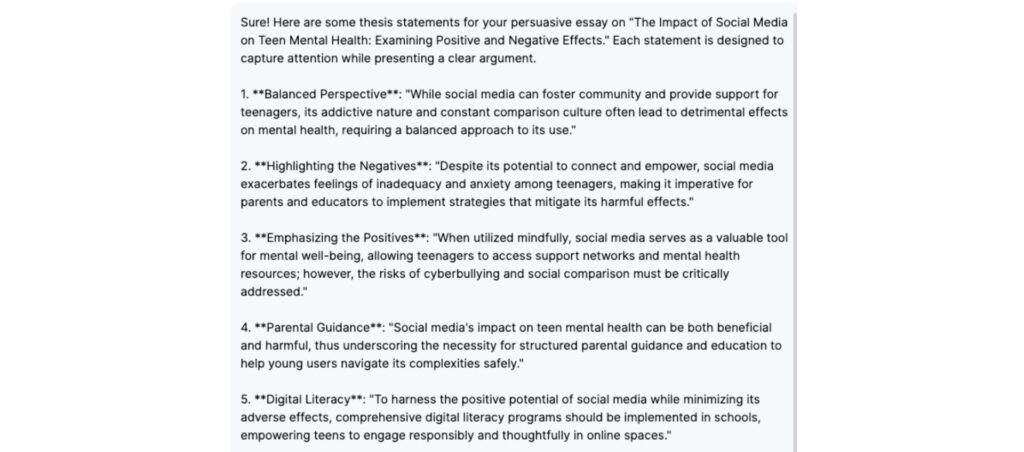
After having Arvin AI plan out my thesis, I started wondering—could it actually write a full paper for me, citations and all? I mean, that would be a student’s dream, right?
So, I decided to give its auto-writing tool a shot to see if it could create the essay I needed.

What came out was surprisingly impressive—a paper with a clear, well-structured outline and relevant sources that would make any student’s life a lot easier. While it didn’t dive too deeply into the finer details, it offered a strong foundation to work from. It’s like having the blueprint for a solid thesis, giving you a head start on both research and organization. For anyone working on a paper, it provides a useful springboard, setting up the framework so you can focus on adding depth and your own analysis.
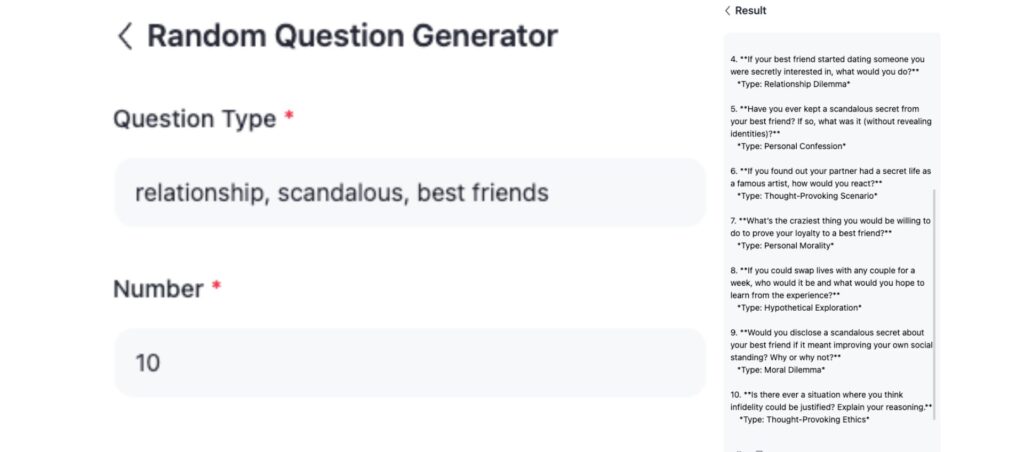
Other than that, Arvin AI feels like more than just a work tool; I can actually picture it fitting right into my personal life. For example, it has this fun little feature called the “Random Question Generator.” I decided to test it out by creating a series of spicy, borderline scandalous questions to ask my best friend—questions that are juicy, saucy, and sometimes a bit of a moral puzzle. Definitely not something you’d use in the office, but perfect for a casual hangout or even as a fun game for younger kids at a family gathering.
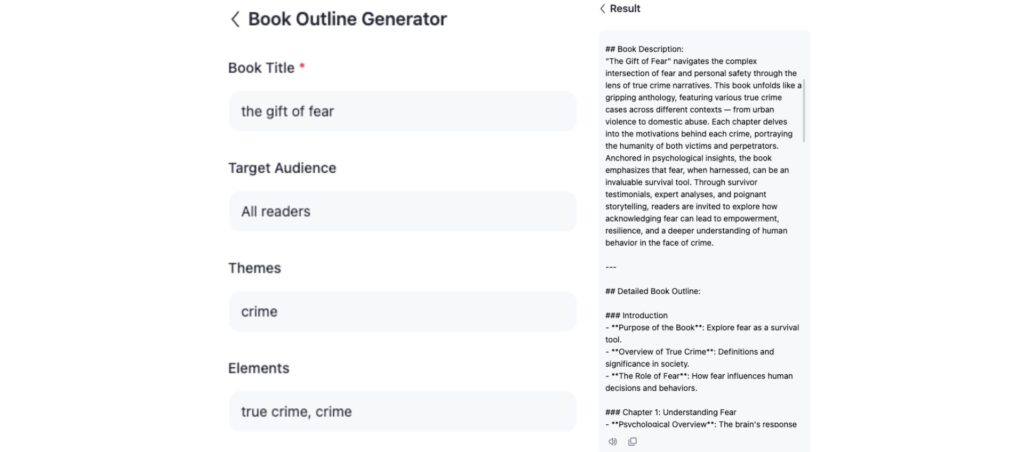
One thing I genuinely appreciate about Arvin AI is how accurate it is. Unlike some other AIs that sometimes throw out random facts or questionable stats, Arvin really digs into the details. It doesn’t just give you generic answers; it actually takes the time to ask about your preferences, your mood, and other factors that make the whole experience feel personalized and thoughtful. It’s like talking to someone who’s genuinely interested in helping you get exactly what you need.
For example, when I used it to summarize The Gift of Fear, a book I recently read, I was blown away by how well it captured the essence. It didn’t just skim the surface—it nailed the summary and even highlighted specific case studies from the book with impressive accuracy. I honestly wasn’t expecting it to be that spot-on, and it was such a pleasant surprise to see an AI pick up on details that matter. It feels like having a reliable assistant who understands the nuances of what you’re looking for.
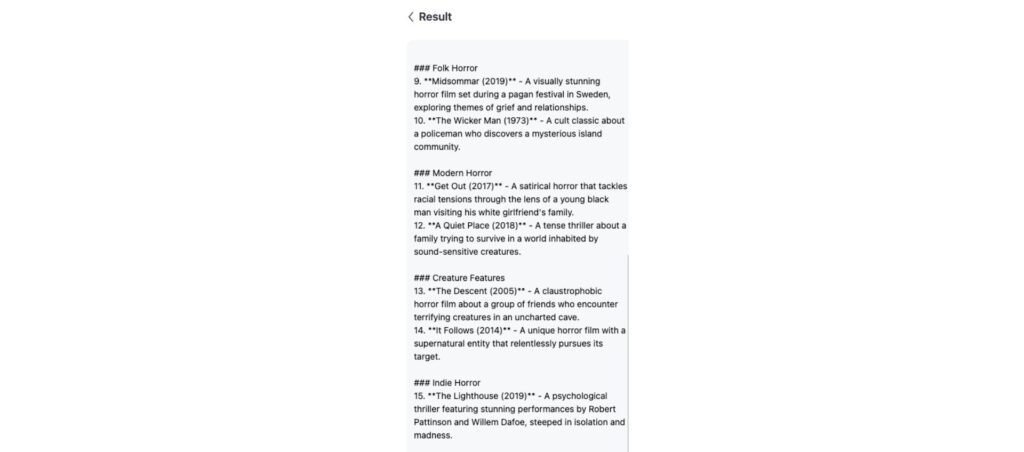
One of my go-to ways to unwind is a bit of doom scrolling—it usually starts with checking what’s on Netflix or Hulu during lunch or after work, then spirals into TikTok or a Reddit thread for extra movie recommendations. But for some reason, Netflix’s algorithm just doesn’t quite get me. Recently, I tried out Arvin, and it actually nailed my taste! It put together a mix of classics and indie films across different decades, each with a quick synopsis to make picking easy. And if the recommendations don’t quite fit? You just hit regenerate, and it’s ready with a new list right away—much simpler than jumping between apps or threads hoping to find something good.
My only critique with using Arvin AI is the formatting—texts come set up for easy copy-pasting into another document, which means there are extra symbols like ‘###’ or ‘**’ in there. As someone using it as an extension, it can feel a bit distracting compared to something without the extra formatting. But honestly, that’s minor compared to the quality of the content it delivers.
Scrivener
Without question, Scrivener deserves a spot as one of the best writing apps available for writers drafting novels, non-fiction books, dissertations, and pretty much any type of long-form work. With all its features, it creates a workplace that makes your research, composition, reorganization, and editing more efficient.

Features
- Adaptable Writing Partner: Scrivener suits writers of many kinds, from authors to reporters. It gives a flexible workspace that encourages writing in any style or order.
- Project Building: Great for big projects, it helps you start by letting you write in parts, and decide where ideas fit best later.
- Flexible Planning and Organizing: Whether you plan every detail or jump right into writing, Scrivener adjusts to your style, offering a built-in outline view for easy organizing.
- Handy Research Tools: Keep your research materials close. Reference them directly alongside your writing, so everything you need is at hand.
- Simple Sharing Methods: When you’re ready to share, Scrivener bundles your work into one document. This includes supporting different formats for printing, self-publishing, or digital submission.
Pros & Cons
| Pros | Cons |
| Flexible writing and organization for any project | May have a learning curve for new users |
| Integrated research tools keep information at hand | Not as straightforward for short, simple documents |
| Customizable for individual writing processes | |
| Supports a wide range of export and formatting options |
My Experience:

It feels as if Notion and Microsoft Word had a baby, and the end result was… complicated. I find it pretty challenging to use as a beginner. However, I can see how it’d be useful for professionals or anyone doing a lot of writing and research. It’s got tons of ways to organize and compartmentalize information. But, if you’re just a casual user, it can honestly feel a bit overwhelming. For me, simpler options, like a basic Word doc, are just way more practical for everyday use.

The layout is really nice to look at, and I think it’d be perfect for someone who’s into details rather than focusing on the big picture. But, honestly, it’s not very friendly for beginners—or even younger people, for that matter. You end up spending so much time just trying to understand how everything works, rather than actually getting things done. For me, it just feels like too much for day-to-day needs.
Grammarly
Grammarly has become an indispensable tool for anyone aiming to enhance their writing. Offering more than mere typo corrections, this platform provides valuable feedback. From the tone to suggesting full-sentence rewrites and tailoring advice to specific style guidelines. Also, recently, they’ve added a generative AI feature.
Whether drafting an email, compiling a report, or polishing a novel, Grammarly’s versatile offerings — can help. Remarkably, 90% of users report that Grammarly helps them edit their work more efficiently with its effectiveness in streamlining the writing process.

Features
- Comprehensive Writing Assistance: Delivers tone suggestions, style guides for businesses, and full-sentence rewrites.
- Narrative AI: Enhances writing with AI-driven insights to improve tone and quality.
- Versatility: Integrates with websites, Word or Google Docs, and as a browser extension.
- Professional Reviews: Offers access to expert writers for an additional review layer, focusing on correctness or both correctness and clarity.
- Plagiarism Detection: A thorough plagiarism-checking tool to ensure originality.
- Performance Insights: Provides a comprehensive score based on correctness, clarity, engagement, delivery, and adherence to your style guide.
Pros & Cons
| Pros | Cons |
| Detailed insights into tone and style | Premium features require a subscription |
| User-friendly across platforms and documents | May overlook nuances in creative writing |
| 90% of users report improved editing efficiency | Feedback may not always align with user intent |
| Valuable plagiarism checker and professional review services | |
| Tailored advice with narrative AI and custom style guides |
My Experience:
My experience with this AI has honestly been a game-changer. It’s incredibly intuitive. Taking my messy, jumbled thoughts into something that sounds so much more human and relatable. I really appreciate how it makes my writing feel like ‘me,’ just clearer and more conversational. It’s as if it understands what I want to say and helps me say it in the best way possible.
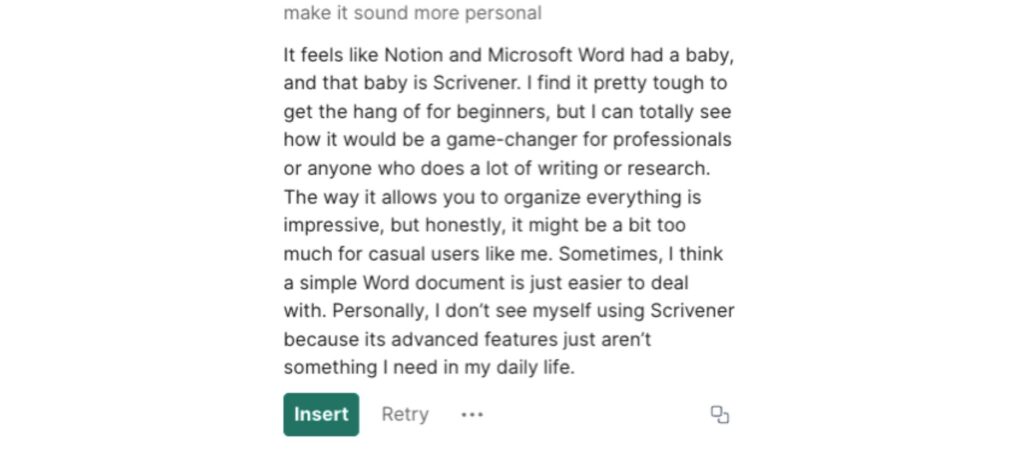
What’s amazing is how flexible it is. Whether you’re a student trying to make an assignment sound a bit more polished, or a manager refining a report, this AI has something to offer. It’s easy to pick up and use. No matter your experience level, it’s genuinely helpful across all kinds of tasks.
For me, it’s not just a tool; it feels like having a super supportive writing buddy who’s always there to help me sound my best. It’s accessible, versatile, and makes communicating so much easier. I didn’t expect it to feel this personal, but it really does—like it’s bridging that gap between what’s in my head and what I actually put down in words. Truly one of the best writing apps.

I really love that it provides an overall score for your writing. It gives a qualitative rating that shows how your writing is doing. It’s such a helpful feature, especially for people who might not feel as confident with words but are more comfortable with numbers. Seeing a clear score can make it so much easier to gauge improvement and understand where you stand. It’s a great way to bridge the gap, for anyone who might struggle with assessing their writing purely through feedback alone.
Hemingway
Hemingway stands out as the best app for writers looking to craft clear, powerful messages without the complexity. It’s not associated with the legendary author, but it embodies a similar spirit of straightforward and impactful writing. Offers both a free and a paid version. Hemingway caters to a wide range of writing needs, ensuring your content is readable and resonates with your intended audience.
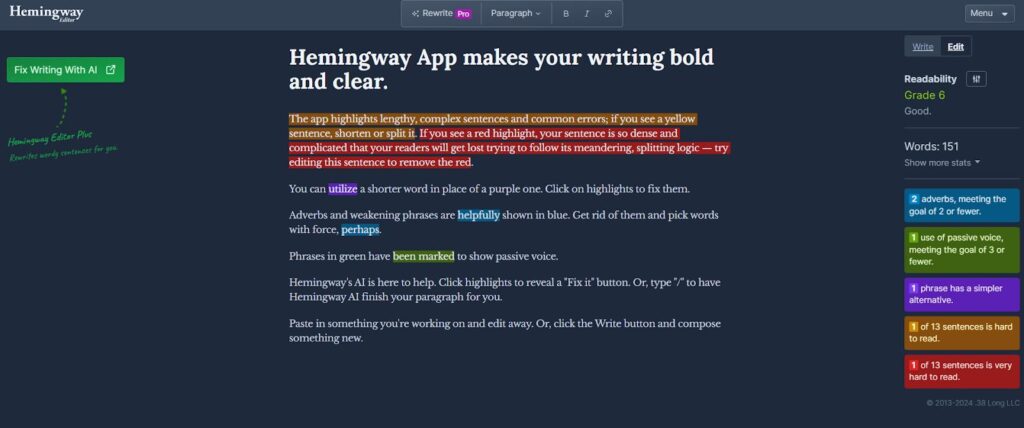
Features
- Enhanced Readability: Analyzes your writing to make it bold and clear.
- Simplicity in Editing: Highlights adverbs and passive voice, suggesting stronger, active alternatives.
- Readability Grade: Assigns a grade level to your writing, helping you target the right audience, from young readers to adults.
- AI Rewrites: The paid version includes AI-powered suggestions for improving complex sentences, making your writing accessible to a broader audience.
Pros & Cons
| Pros | Cons |
| Free plan offers comprehensive editing tools | May oversimplify complex ideas |
| Improves readability with simple tweaks | Limited to English language improvements |
| Targets writing to the appropriate audience level | |
| AI rewrites in the paid version enhance clarity |
My Experience:
This is an excerpt from The Gift of Fear, a published book, and yet it’s impressive how Hemingway can still identify areas for improvement. What’s fascinating is that it catches subtle weaknesses and details that even a human editor might overlook. The way these improvements are laid out on the interface makes it really easy for anyone. Especially to see where they can refine their work. Therefore, making it an incredibly valuable tool for someone like me, who writes professionally.
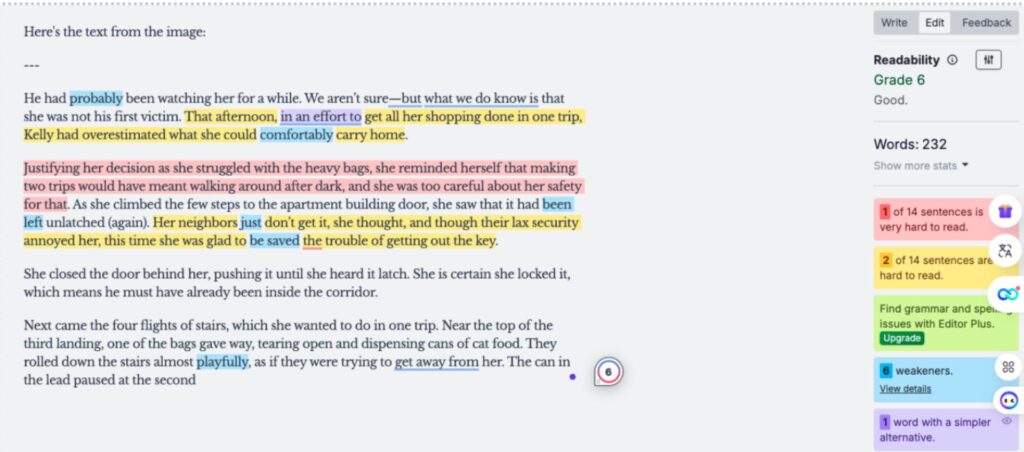
While I’m not an author, having this kind of feedback feels invaluable, its almost like having a mentor who points out the hidden gaps in my writing. It’s one thing to receive general feedback, but this level of targeted insight by the AI allows me to focus on specific areas that need fine-tuning. Instead of vague advice, I get clear guidance on exactly where and how to improve, which is incredibly helpful.
For anyone who writes professionally—whether it’s reports, articles, or any form of communication—having a tool like this is a huge asset for self-editing. It gives me an objective perspective on the work I do, helping me spot things I might have missed on my own. In the end, this process makes writing feel less like a chore and more like a continuous opportunity to refine my skills and bring my best to the table. This app is a strong contender for being one of the best writing apps out there.
Dabble
Writing a book is no small feat; Dabble understands that better than anyone. It’s not just about putting words on a page; it’s about breathing life into ideas. Organizing thoughts, and bringing your story to fruition.
Dabble steps in as the best app for writers who are serious about their craft. Designed by a writer for writers, Dabble focuses on making the writing process as seamless and enjoyable as possible.
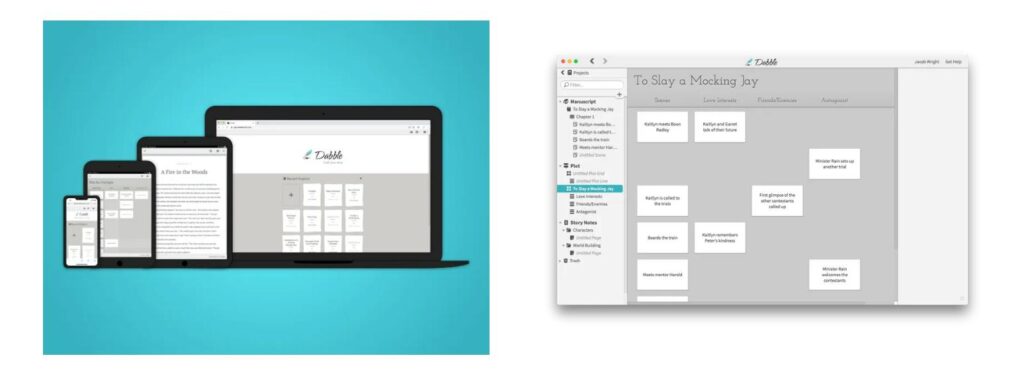
Features
- Cloud-Based Access: Write from anywhere and never worry about losing a single word.
- Plotting and Planning Tools: Easily organize your plot, develop characters, and map out settings.
- Goal Setting: Track your progress with customizable word count goals and deadlines.
- Collaborative Writing: Work together with others on your project with ease.
- Focus Tools: Minimize distractions and stay on track with writing-focused features.
Pros & Cons
| Pros | Cons |
| Access your work anywhere, anytime | Requires internet for full features |
| Advanced plotting and character tools | |
| Goal tracking for motivation | |
| Collaborative features for team projects | |
| Designed specifically for book writing |
My Experience
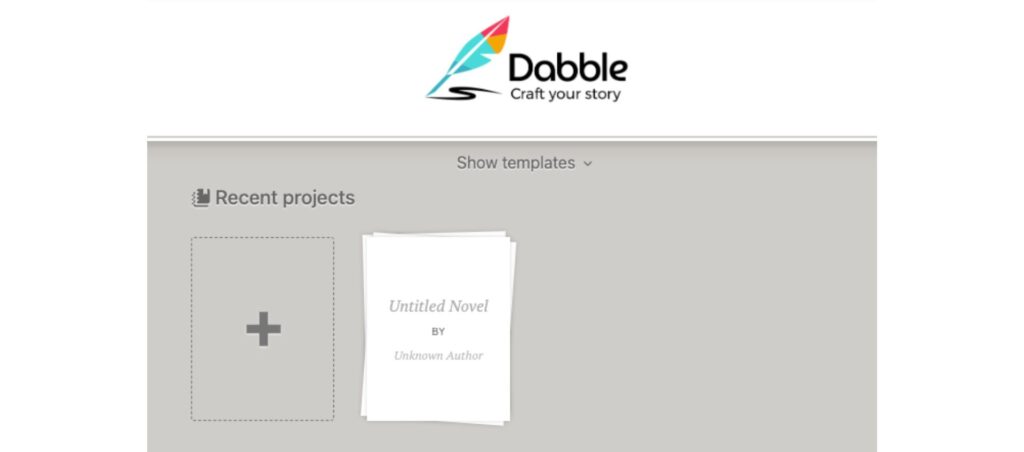
The interface of Dabble has a bit of an old-school vibe, which stands out, especially now when minimalist, sleek designs seem to be everywhere. At first, I thought it might feel outdated, but honestly, it’s actually kind of refreshing—and even feels right for the ‘old-school’ craft of writing. There’s something comforting about its straightforward, no-nonsense approach. It’s easy to navigate and doesn’t bombard you with options, which, in my experience, makes it a lot easier to dive straight into writing without getting sidetracked.

Compared to some of the flashier writing tools out there, Dabble has no frills, and that simplicity is its strength. I really like how intuitive it is. Some writing programs try to do too much, layering in endless features that end up feeling more like clutter. Dabble, on the other hand, feels like it’s cut away the noise and just kept what matters most for the writing process.

One of my favorite aspects is compartmentalization. It might not be the most visually updated layout, but the way everything is organized makes it so easy to locate specific sections and keep my ideas neatly sorted. When I’m working on different parts of a project, I don’t have to waste time searching for things; it’s all right there. That alone makes it incredibly worthwhile for me.
So, while it may not look as ‘modern’ as other platforms, the practical, user-friendly design truly shines. It’s like a reliable, well-organized workspace where I can focus on the words, not the interface. Dabble’s simplicity is a reminder that sometimes, less really is more.
FAQ
What is The Best App to Help with Writing?
The best writing app depends on your individual needs. However, Scrivener excels for long projects, Grammarly enhances grammar and style, Google Docs offers seamless collaboration, and the Hemingway App simplifies your writing. Depending on what you need help with will depend on what app is the best.
What App Do Most Authors Use?
Authors often combine tools to suit their writing needs. Grammarly is widely used for editing, while Microsoft Word is a classic choice for drafting. The Hemingway App assists in making writing clear and engaging, and Google Docs is preferred for its collaborative features and accessibility.
What is the Best App to Write a Non-Fiction Book?
Scrivener stands out for non-fiction projects due to its robust features for organizing research and data, making it easier to manage complex information and draft your book efficiently.
Which App is Best for Content Writing?
Google Docs and Grammarly are top picks for content writing. Google Docs offers simplicity and excellent collaboration features, while Grammarly ensures your content is clear, engaging, and error-free, which is crucial for effective communication.
What is the Best Free Writing App for Android?
On Android, many top writing apps are available right from the Google Play Store—whether it’s Google Docs, Arvin AI, Dabble, or other AIs. You’re free to choose the one that fits your style, with no restrictions.
What App is Better for Writing?
Between Dabble and Scrivener, if you’re up for learning all the features, Scrivener offers a bit more precision and detail. But if you want to jump right into writing, Dabble is ideal for both beginners and experienced writers—it’s easy to use and highly intuitive.
What is the best app for long-form writing?
For long-form writing, Scrivener is widely considered the best. It’s designed to handle complex projects, making it easy to organize chapters, research, and notes all in one place. For a simpler, more intuitive option, Dabble is also great. It provides an organized workspace that’s perfect for both beginners and pros.
What is the Best App to Make a Story?
The best app for making a story is Arvin AI. With tools like the Book Outline Generator, Sentence Expander, and AI Writing Generator, it helps you go from idea to finished story. Arvin AI makes it easy to build plots, grow ideas, and develop characters—bringing your storytelling to life.
What Apps do Most Authors Use?
Most authors rely on a mix of apps to get their writing done. Scrivener is great for organizing big projects, Grammarly helps catch grammar issues, and Google Docs makes collaboration easy. Hemingway is handy for simplifying language, and Arvin AI is perfect for generating ideas and creating outlines. Together, these apps cover everything from drafting to editing, making writing smoother and more enjoyable.
Summary
After reading the above, you should clearly understand the best writing apps for writers. We’ve mentioned all types of apps. From apps that’ll help with writing to blog posts, essays, and screen and book writing. Like a tech stack, you can improve your writing, making your content more enjoyable to read.

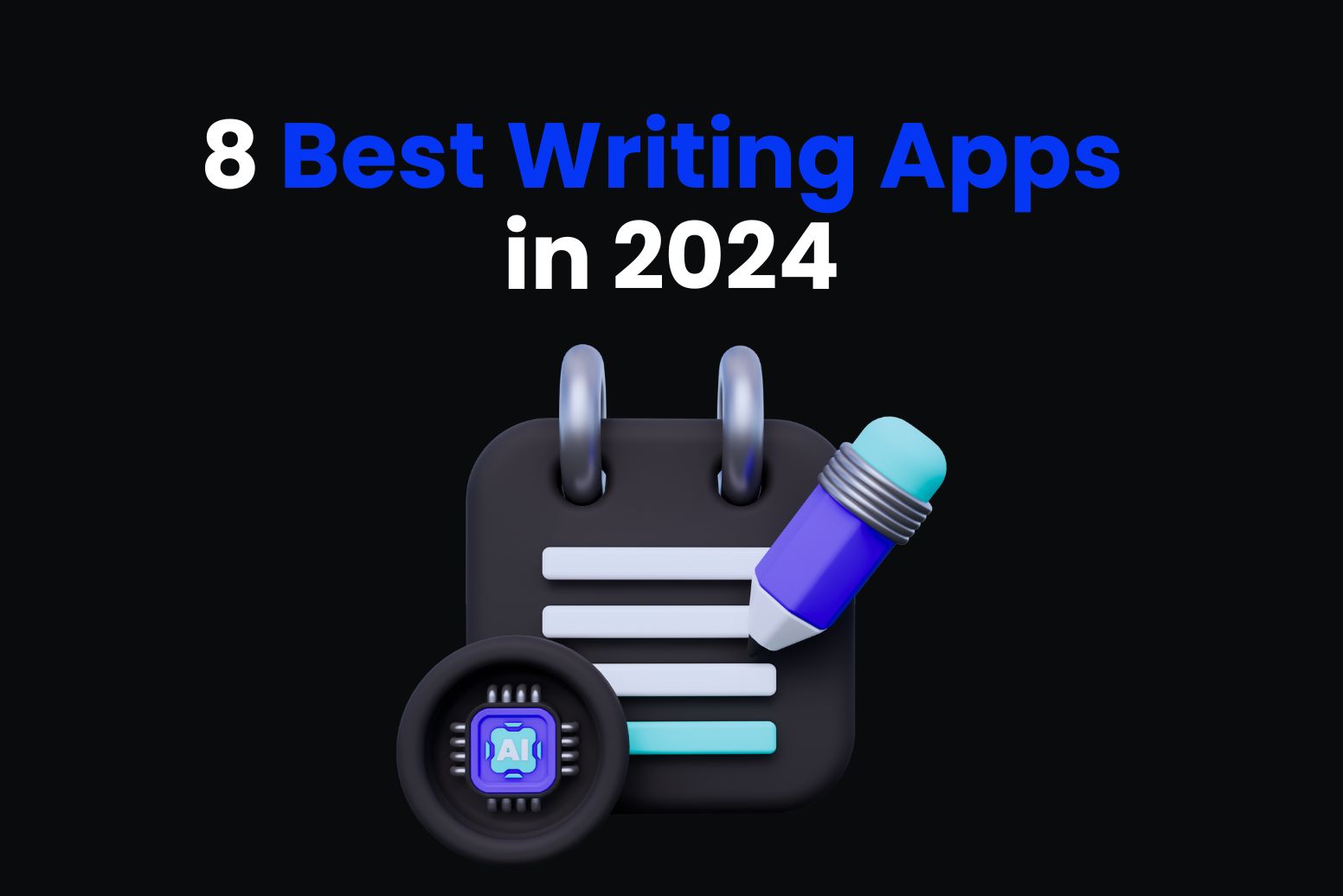


![How Does AI Detection Work_ The Ultimate Guide [2024]](https://arvin.chat/wp-content/uploads/2024/03/How-Does-AI-Detection-Work_-The-Ultimate-Guide-2024.jpg)

